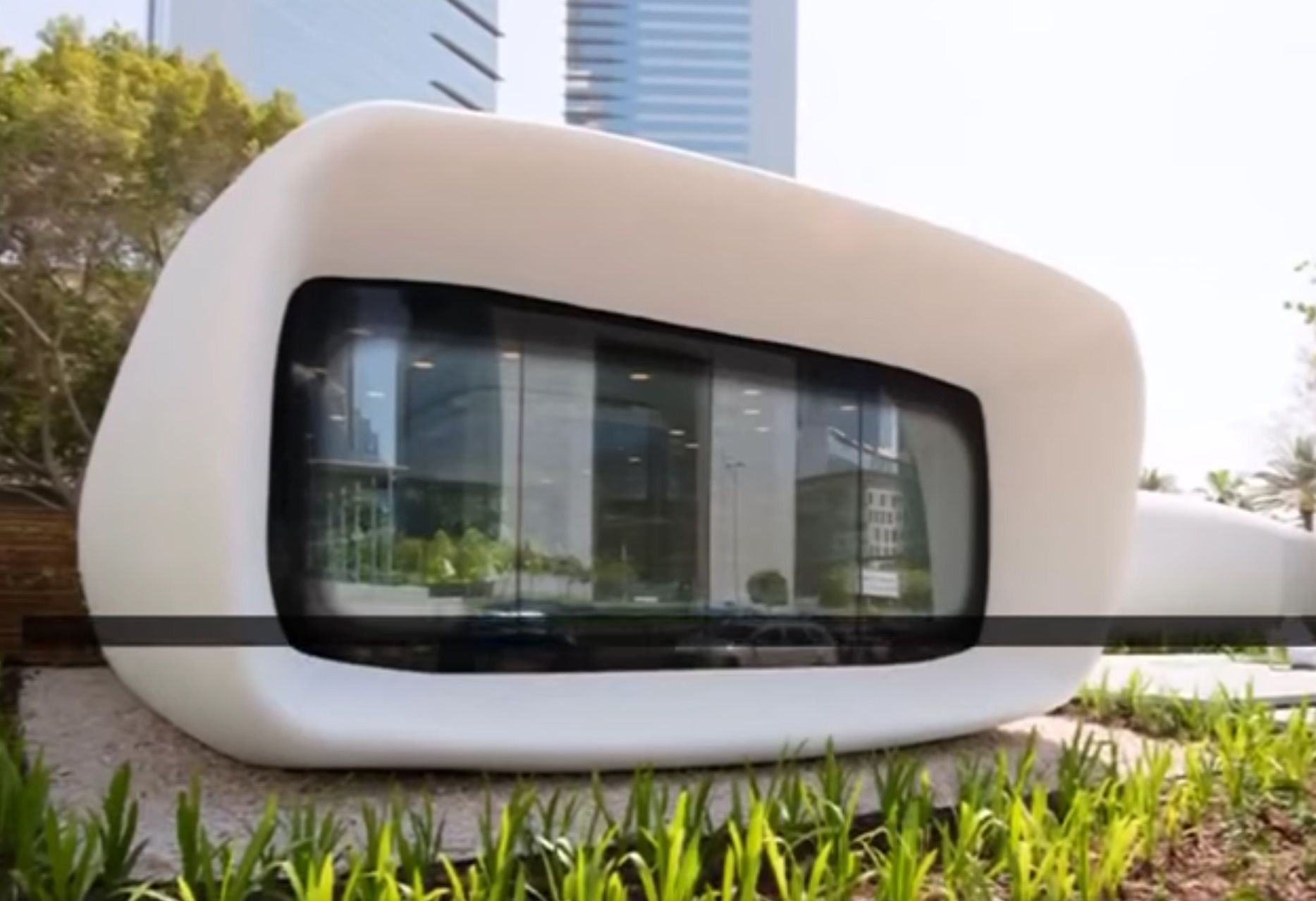
There’s been some buzz coming from Dubai about 3D printing, but does this make any sense?
The first mention I heard of 3D printing technology in Dubai was a couple of years ago when that Chinese firm who had been 3D printing standard building components sought to set up an operation in Dubai. But now, it seems to be a lot more serious, as the city has declared that 25% of its new buildings should be 3D printed by 2030.
That’s a dramatic statement. One that simply could not be possible in the west, mostly due to the cost of 3D printing.
Evidently the Emirate is trying to transition their economy from one entirely dependent on oil and gas to a much more diversified structure. This includes ventures such as tourism, Emirates Airline and many other projects. It seems that another is 3D printing.

Is it possible? This video apparently shows a 250sf office “building” that has been 3D printed. In reality, the building is not 3D printed, but its components are 3D printed and then assembled onsite.
So it’s technically possible to 3D print an office. But is it actually financially feasible? They say the cost of this building was USD$140,000. That’s around USD$560 per square foot, a truly spectacular cost for an unfurnished tiny office in any western zone.
But in Dubai, maybe this isn’t so expensive. Dubai is said to be the 22d most expensive city in the world, and the most expensive in the middle east. In looking up the costs of construction, I found that the UAE (of which Dubai is a major part), the cost per square meter to build exceeded USD$5,000, or USD$467 per sf.
This is at least close to the cost of the 3D printed office, but probably double the cost in major western cities.
There’s possibly another reason Dubai has pursued this angle: labor availability and reliability. It’s conceivable the city has challenges meeting the needs for manual labor to perform construction activities, and 3D printing components avoids much labor. It may also produce the building faster than with manual labor, too. The building in the video above apparently was constructed in 17 days – although it is quite a small structure.
For now, it is entirely possible that Dubai has the right mix of financial, geographical and demographic factors to enable the feasibility of 3D printed buildings.
But for the rest of the world, it’s not likely happening anytime soon.
Via YouTube

